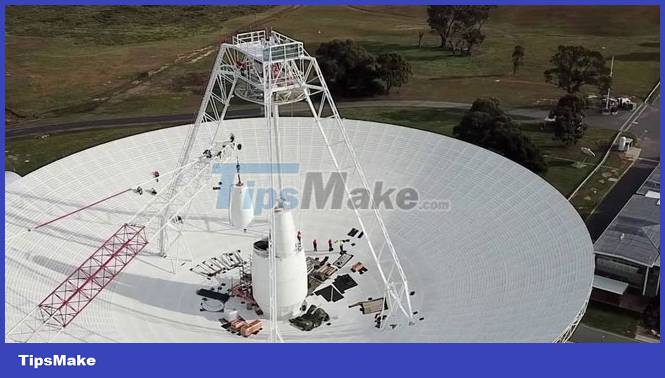23 billion km away from Earth, how the spacecraft communicates with us
The spacecraft communicates with Earth by radio waves via the Deep Space Network (DSN), a collection of large radio antennas that are evenly spaced around the globe.
The DSN antennas receive information, images, details about the position and operational status sent back to Earth by the spacecraft. The DSN is also used by NASA to send "commands" to spacecraft.

Radio wave communication system
DSN sites are located roughly equally spaced across the planet such as near Canberra (Australia), Madrid (Spain) and Goldstone (USA). to ensure the regulator never loses track of the spacecraft stand as the Earth rotates.
Spacecraft and rovers use only small antennas, transmitting weak radio signals to DSN antennas on Earth. Using tools that are too heavy, take up too much space, or consume a lot of energy is not possible to ensure performance in space.
The further away the spacecraft is, the weaker the signal it sends back, so the larger the antenna on the ground is needed to detect the signal. Each DSN point has the largest antenna with a diameter of 70 meters.
The speed of radio waves is constrained by a common speed limit, the speed of light, of about 300,000 km/s, so communication with spacecraft is not instantaneous like normal communication. The further away the spacecraft is, the greater the delay.
Suppose, if a spacecraft were on Mars, about 55 million kilometers from us, the delay would be about 4 minutes. With a distance of tens of billions of kilometers, the delay can be up to 24 minutes.

Technical secrets of Voyager . ships
The most distant objects that the DSN keeps in contact with are the two NASA Voyager spacecraft launched in 1977. Voyager 1 is now outside the Solar System.
Both Voyagers have large antennas, up to 3.7 m, larger than other spacecraft with antennas from 2-3 m. This antenna points straight and transmits the signal to an antenna 34 m in diameter on Earth.
Voyager transmits signals in the 8 GHz frequency band so that antennas on Earth can use powerful amplifiers to read the ship's signals without worrying about interference signals. On Earth, DNS uses tens of thousands of watts of power to transmit commands because there is no power limit.
Voyager is more than 23 billion km or 20 light hours from Earth, so the signal transmitted to the DSN antenna is very weak. Voyager transmits about 20 billion times less energy than it takes to run a digital watch. Even so, scientists at NASA were still able to amplify the signal to 'hear' loud and clear.
Centers in each DSN region receive signals from the spacecraft, and then to the Space Flight Operations Facility at NASA's Jet Propulsion Laboratory in California (USA). Scientists will process those photos and data and share them with the world.
You should read it
- Earth is light despite receiving 43 tons of dust from other planets every day
- Not a UFO, this is the cause of the mysterious black circle in the sky of America
- What is Deep Web? Where is the Deep Web? Good or bad?
- NASA will launch new space telescope into space to find 'second earth'
- Admire photos of the Earth from space with the 108-point camera of Mi 10 Pro
- Beautiful Earth video at night is filmed from the International Space Station ISS
 The strangest trains, there are 1-0-2 in the world
The strangest trains, there are 1-0-2 in the world Interesting facts about the picture of 'devil horns' floating in the sea caused a stir in public opinion
Interesting facts about the picture of 'devil horns' floating in the sea caused a stir in public opinion How do sperm whales hunt giant squid?
How do sperm whales hunt giant squid? What is magnetic water? The 1-0-2 properties of water from
What is magnetic water? The 1-0-2 properties of water from 10 aircraft with the most 'craziest' design in history
10 aircraft with the most 'craziest' design in history Why are there such strange names as Dead Sea, Black Sea, Red Sea?
Why are there such strange names as Dead Sea, Black Sea, Red Sea?